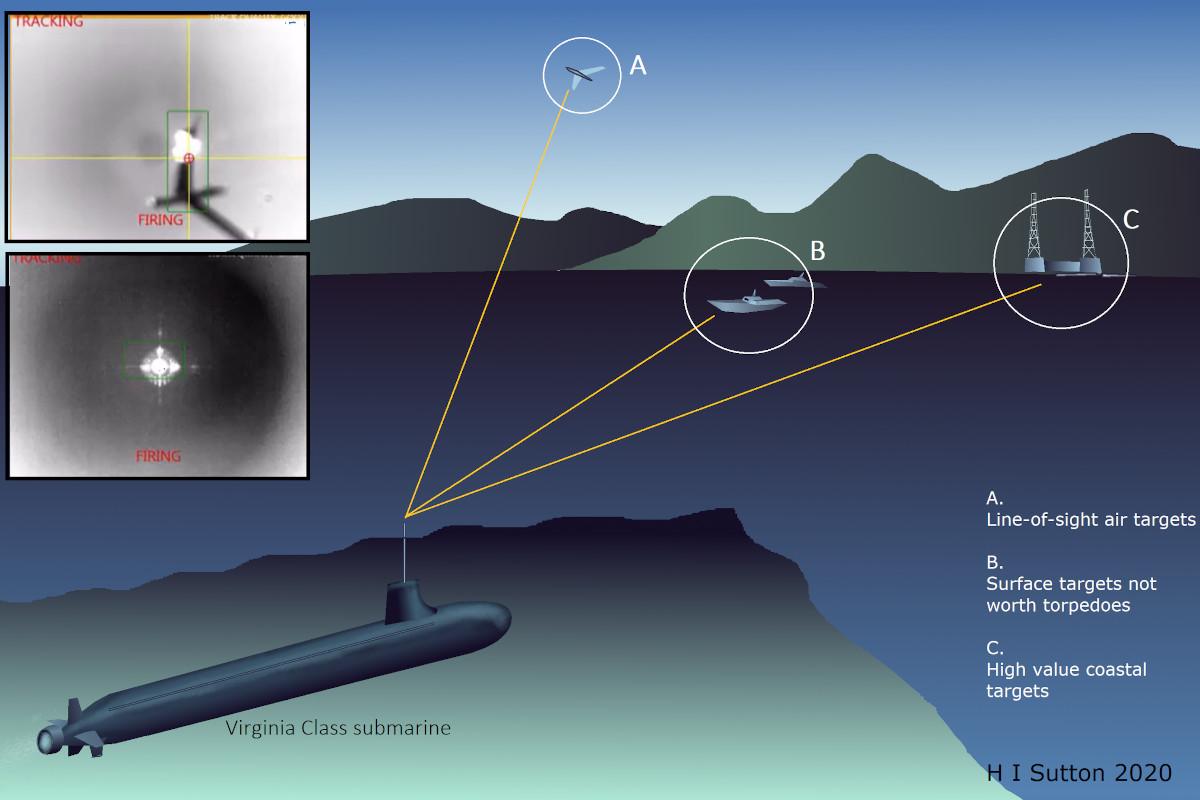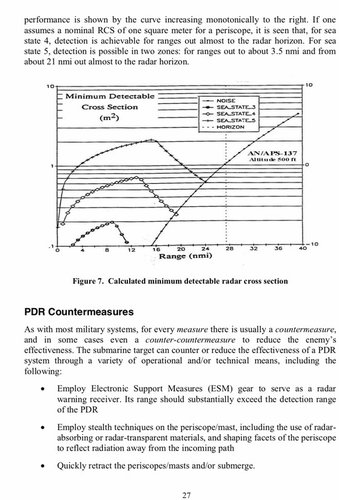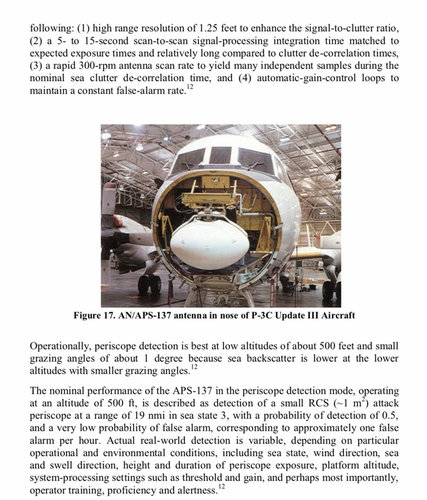Actually, while YAL-1 can be connected to a whole host of radar and satellite, it will be the one that do the initial detection rather than being cued because it is a boost phase intercept system.
Ballistic missiles right after launch are still below radar horizon but can already be detected by AAS-42 sensor on YAL-1 because YAL-1 is at high altitude and much closer to target area compared to these long range anti ballistic missile radar.
Notably not a position the submarine would be in. A 360 degree staring IRST would require the mast to be up, creating a large radar target, (and will probably require it's own mast, further increasing the radar signature). The weather conditions of the surface of the sea would also not be fully conducive to passive electro optical observation. Radars are still necessary if you want to look through clouds, or other atmospheric conditions.
If the submarine is already detected, it can either wait till a torpedo dropped directly on top of it, or kill the MPA and the torpedo with laser. The second option is better.
Or it can break contact with the MPA by presenting a narrow aspect to the sonobuoy, or perhaps more importantly, not getting detected by the active sonobuoy in the first place, by not getting too close to it. There are also other means of reducing the effectiveness of active sonars, including anechoic coating and shaping of the submarine hull to avoid this issue. Rising to periscope depth will ensure the submarine gets closer to any active sonobuoy, and will turn a possible contact into a definite contact. The MPA can fly over to the submarines position before it gets into position to use the laser (any depth below periscope depth) and sink the relatively slow shallow target with the weapons at its disposal.
Even if others MPA and ASW in the area know the general location of the submarine because a MPA is down, they still lacking in an effective weapon to kill it. Winged torpedo take too long and can be destroyed very quickly, it like trying to kill an AEGIS carrier but only armed with iron bomb
Your scenario was that the submarine would kill the MPA and then leg it, not duke it out with every aircraft and surface ship in the local area. Winged torpedoes coming from multiple directions simultaneously would saturate the submarine quickly, that is if it could even engage them in the first place without a radar, because gliding weapons with wing kits do not have large IR signatures, and some will be hard to spot. Again the submarine will be at periscope depth, and at low speed to avoid damaging the mast, so it will be in a terrible position to avoid any incoming torpedo that actually does make it into the water. Given the shallow depth and low speed of the submarine, the lightweight torpedoes will also have more effective range, and can be dropped considerably short of the submarine itself.
Alternatives available to the opponent could also include vectoring in a submarine of their own to engage the laser-equipped submarine. The opponent's submarine, freed from the constraints of having to stay at periscope, could exploit the acoustic advantages that greater depth brings, and sink it with a conventional heavyweight torpedo. Or getting a surface ship to engage the submarine with torpedoes, RBUs or their equivalent and potentially consider engaging the periscope with it's main gun, though these options do put it well within range or retaliation of the submarine.
AEGIS ships have phased arrays radars with missile data-links, and multiple illuminations, enabling to engage multiple targets simultaneously. They're also broadly speaking, not sufficient on their own against any kind of mass raid, hence why they operate in multiples, potentially as part of a carrier airgroup. They don't have a single laser, cued by FOV akin to looking down a straw of a bore-sighted electro-optical system.
Of course whilst this submarine is trying to attract the attention of every ASW unit in range, it's not doing the mission it was intended to do, whether that is SIGINT, attacking a convoy, engaging a land target with cruise missiles, inserting a special forces team, performing strategic ASW by sinking a boomer, whatever it is that mission has now been scrubbed, something which was by no means certain until the captain decided to try to beam an MPA.




